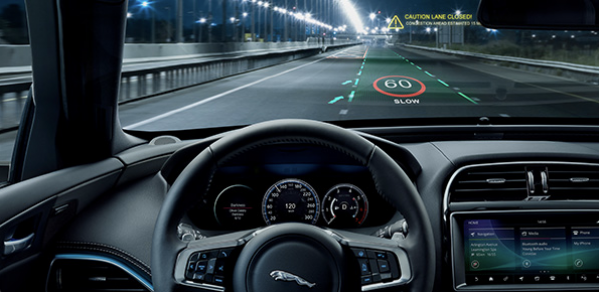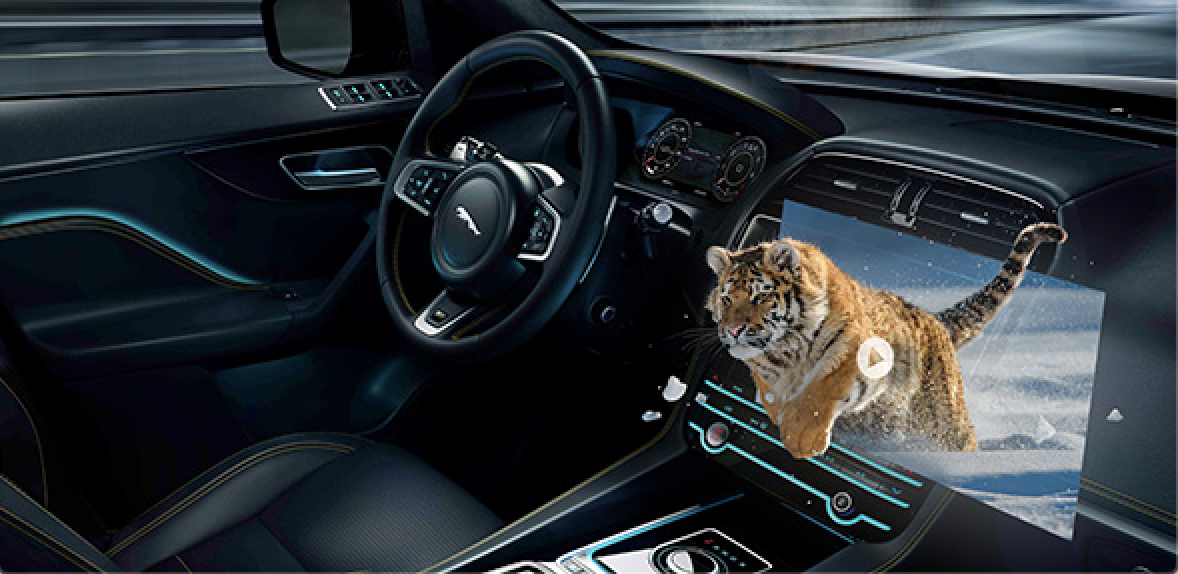
Cambridge engineers are working on a powerful new 3D head-up display to project real-time safety information in front of the driver.
This programme is at the forefront of development in the virtual reality space – we’re looking at concepts and components which will set the scene for the connected, shared and autonomous cars of the future.
Professor Daping Chu
The Centre for Advanced Photonics and Electronics (CAPE) at the University of Cambridge is working in partnership with Jaguar Land Rover on the research, which is focused on developing an immersive head-up display that will closely match real-life experience, allowing drivers to react more naturally to hazards and prompts.
These safety alerts include, for example, lane departure, hazard detection, sat nav directions, and will aim to reduce the effect of poor visibility in poor weather or light conditions. Augmented reality would add the perception of depth to the image by mapping the messages directly onto the road ahead.
Studies conducted in Germany, show that the use of Stereoscopic 3D displays in an automotive setting can improve reaction times on ‘popping-out’ instructions and increases depth judgments while driving.
In the future, the innovative technology could be used by passengers to watch 3D movies. Head and eye tracking technology would follow the user’s position to ensure they can see 3D pictures without the need for individual screens or shutter glasses worn at the cinema.
In a fully autonomous future, the 3D displays would offer users a personalised experience and allow ride-sharers to independently select their own infotainment. Several passengers sharing a journey would be able to enjoy their own choice of media – including journey details, points of interest or movies – optimised from their seats.
Professor Daping Chu, Director of the Centre for Photonic Devices and Sensors and Director of CAPE, said: “This programme is at the forefront of development in the virtual reality space – we’re looking at concepts and components which will set the scene for the connected, shared and autonomous cars of the future. CAPE partners are world-leading players strategically positioned in the value chain network. Their engagement provides a unique opportunity to make a greater impact on society and further enhance the business value of our enterprises.”
Valerian Meijering, Human Machine Interface and Head-Up Display Researcher for Jaguar Land Rover, said: “Development in virtual and augmented reality is moving really quickly. This consortium takes some of the best technology available and helps us to develop applications suited to the automotive sector. Not only does it provide a much richer experience for customers, but it also forms part of our Destination Zero roadmap; helping us to move towards a safer, more intuitive and smarter future, for everybody.”

A 3D image/movie projected in front of the passenger without the need for individual screens or shutter glasses worn at the cinema. Credit: Jaguar Land Rover.

